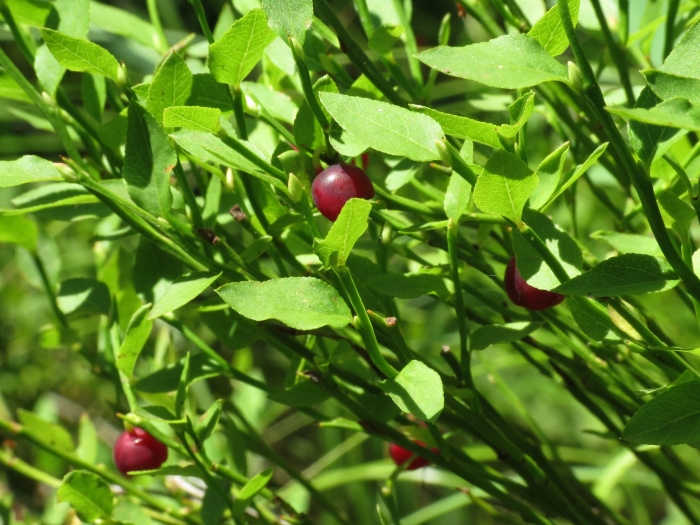Grouse Whortleberry
(Vaccinium scoparium)
Grouse Whortleberry (Vaccinium scoparium)
/
/

Katja Schulz
CC BY 4.0
Image By:
Katja Schulz
Recorded By:
Copyright:
CC BY 4.0
Copyright Notice:
Photo by: Katja Schulz | License Type: CC BY 4.0 | License URL: http://creativecommons.org/licenses/by/4.0/ | Rights Holder: Katja Schulz | Publisher: iNaturalist | Date Created: 2014-08-01T13:47:19-07:00 |
























Estimated Native Range
Summary
Vaccinium scoparium, commonly known as Grouse Whortleberry, is a low-growing, deciduous shrub native to subalpine and alpine regions, including moist coniferous forests, meadows, and rocky slopes in western North America. It is found from British Columbia and Alberta to northern California, Colorado, and New Mexico, typically at elevations of 2297 to 9843 feet. This plant reaches a modest height of up to 8 inches and spreads laterally through rhizomes, forming dense mats. It features small, leathery leaves and bell-shaped, pinkish-white flowers that bloom in late spring to early summer. The flowers give way to soft, bright red berries that are a valuable food source for a variety of wildlife, including elk, mule deer, bears, squirrels, foxes, skunks, and birds.
Grouse Whortleberry is appreciated for its hardiness and ability to thrive in poor, rocky soils with good drainage. It requires minimal maintenance and is suitable for rock gardens, native plant gardens, and as a ground cover in suitable climates. While not commonly used in urban landscapes, it can be a charming addition to naturalized areas. It prefers partial shade to full sun and requires moderate water, especially in drier conditions. The berries of Vaccinium scoparium were traditionally harvested by Native Americans for food, and they can still be used in jams, jellies, and pies. However, the plant is not widely cultivated for its fruit. Care should be taken to avoid overwatering, as it can lead to root rot.CC BY-SA 4.0
Grouse Whortleberry is appreciated for its hardiness and ability to thrive in poor, rocky soils with good drainage. It requires minimal maintenance and is suitable for rock gardens, native plant gardens, and as a ground cover in suitable climates. While not commonly used in urban landscapes, it can be a charming addition to naturalized areas. It prefers partial shade to full sun and requires moderate water, especially in drier conditions. The berries of Vaccinium scoparium were traditionally harvested by Native Americans for food, and they can still be used in jams, jellies, and pies. However, the plant is not widely cultivated for its fruit. Care should be taken to avoid overwatering, as it can lead to root rot.CC BY-SA 4.0
Plant Description
- Plant Type: Shrub
- Height: 1-3 feet
- Width: 1-3 feet
- Growth Rate: Rapid
- Flower Color: Pink, Red, White
- Flowering Season: Spring, Summer
- Leaf Retention: Deciduous
Growth Requirements
- Sun: Full Sun, Part Shade
- Water: Medium
- Drainage: Fast, Medium
Common Uses
Bird Garden, Deer Resistant, Edible*Disclaimer: Easyscape's listed plant edibility is for informational use. Always verify the safety and proper identification of any plant before consumption., Low Maintenance
Natural Habitat
Subalpine and alpine regions, including moist coniferous forests, meadows, and rocky slopes
Other Names
Common Names: Grouseberry, Littleleaf Huckleberry, Scoparium Red Huckleberry
Scientific Names: , Vaccinium scoparium, Vaccinium erythrococcum, Vaccinium microphyllum, Vaccinium microphyllum, Vaccinium myrtillus var. microphyllum, Vaccinium scoparium,
GBIF Accepted Name: